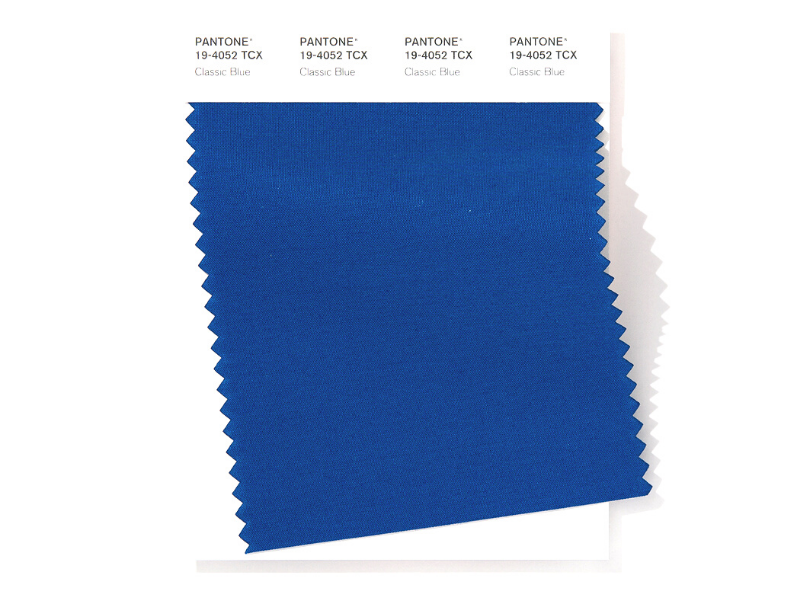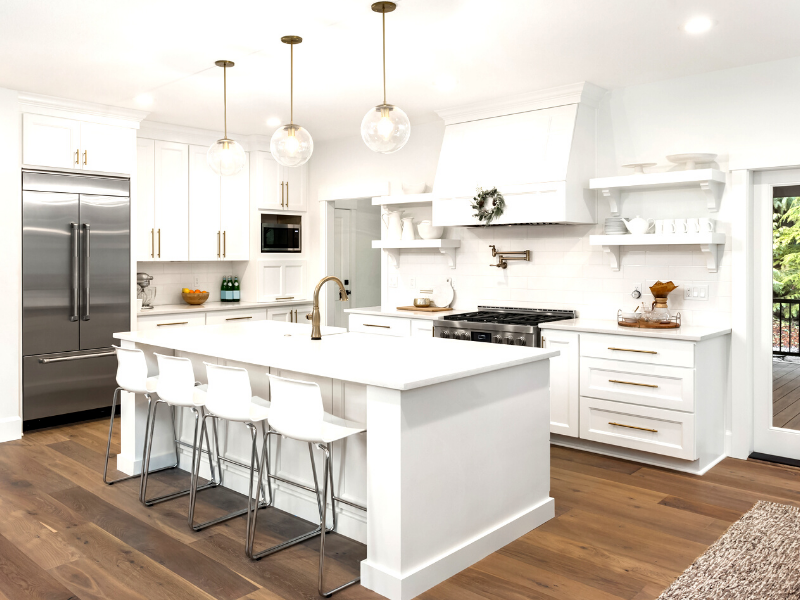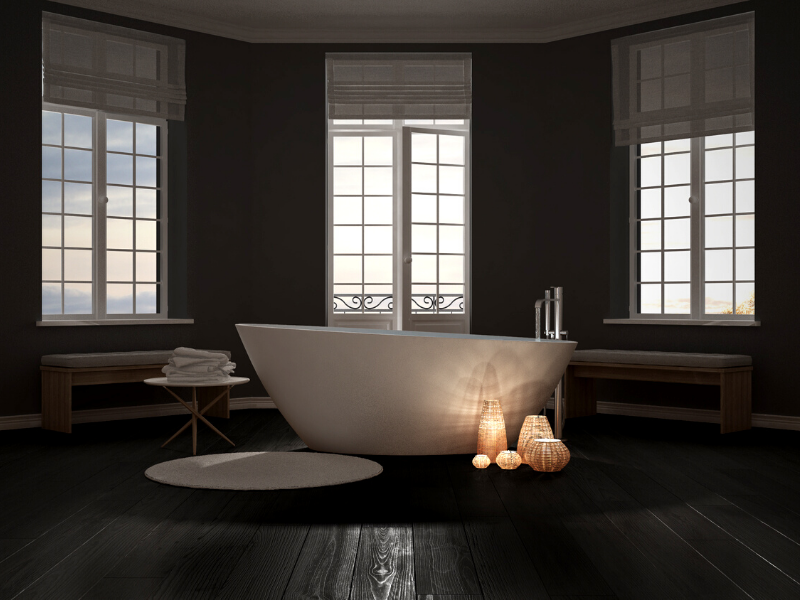What to Consider When Adding to Your Home


When dissatisfaction with your current home strikes, it can be exciting to launch into a plan for a new addition. A new living room, bedroom, or more can add value to your home while improving your quality of life.
On the other hand, even a modest addition can turn into a major construction project, with architects and contractors to manage, construction workers traipsing through your home, hammers pounding, and sawdust everywhere. And although new additions can be a very good investment, the cost-per-square-foot is typically more than building a new home, and much more than buying a larger existing home.
Define your needs
To determine if an addition makes sense for your situation, start by defining exactly what it is you want and need. By focusing on core needs, you won’t get carried away with a wish list that can push the project out of reach financially.
If it’s a matter of needing more space, be specific. For example, instead of just jotting down “more kitchen space,” figure out just how much more space is going to make the difference, e.g., “150 square feet of floor space and six additional feet of counter space.”
If the addition will be for aging parents, consult with their doctors or an age-in-place expert to define exactly what they’ll require for living conditions, both now and over the next five to ten years.
Types of additions
Bump-out addition
“Bumping out” one or more walls to make a first-floor room slightly larger is something most homeowners think about at one time or another. However, when you consider the work required, and the limited amount of space created, it often figures to be one of your most expensive approaches.
First-floor addition
Adding a whole new room (or rooms) to the first floor of your home is one of the most common ways to add a family room, apartment or sunroom. But this approach can also take away yard space.
Dormer addition
For homes with steep rooflines, adding an upper floor dormer may be all that’s needed to transform an awkward space with limited headroom. The cost is affordable and, when done well, a dormer can also improve the curb appeal of your house.
Second-story addition
For homes without an upper floor, adding a second story can double the size of the house without reducing surrounding yard space.
Garage addition
Building above the garage is ideal for a space that requires more privacy, such as a rentable apartment, a teen’s bedroom, guest bedroom, guest quarters, or a family bonus room.
Permits required
You’ll need a building permit to construct an addition, which will require professional blueprints. Your local building department will not only want to make sure that the addition adheres to the latest building codes, but also ensure it isn’t too tall for the neighborhood or positioned too close to the property line. Some building departments will also want to ask your neighbors for their input before giving you the go-ahead.
Requirements for a legal apartment
While the idea of having a renter that provides an additional stream of revenue may be enticing, the realities of building and renting a legal add-on apartment can be sobering. Among the things you’ll need to consider:
Special permitting
Some communities have regulations against “mother-in-law” units so they have zone-approval requirements.
Separate utilities
In many cities, you can’t charge a tenant for heat, electricity, and water unless utilities are separated from the rest of the house (and separately controlled by the tenant).
ADU Requirements
When building an “accessory dwelling unit” (the formal name for a second dwelling located on a property where a primary residence already exists), building codes often contain special requirements regarding emergency exits, windows, ceiling height, off-street parking spaces, the location of main entrances, the number of bedrooms, and more.
In addition, renters have special rights while landlords have added responsibilities. You’ll need to learn those rights and responsibilities and be prepared to adhere to them.
Average costs
The cost to construct an addition depends on a wide variety of factors, such as the quality of materials used, the laborers doing the work, the type of addition and its size, the age of your house and its current condition. For ballpark purposes, however, you can figure on spending about $200 per square foot if your home is in a more expensive real estate area or about $100 per foot in a lower-priced market.
You might be wondering how much of that money your efforts might return if you were to sell the home a couple of years later? The answer to that question depends on a number of variables, but the average “recoup” rate for a family room addition is typically more than 80 percent.
The bottom line
While you should certainly research the existing-home marketplace before hiring an architect to map out the plans, building an addition onto your current home can be a great way to expand your living quarters, customize your home, and remain in the same neighborhood.
Staying Safe When Selling Your Home


Image Source: Canva
Staying organized while uprooting your life and moving from one home to another can feel impossible. There’s also the pressure to keep your home clean and tidy for showings to prospective buyers, but your personal safety is an important consideration as well.
When selling your home, there will be strangers entering your space, so it’s important for you and your agent to take certain safety precautions. Like so many things in life, they can feel more manageable once written down, so we made this handy checklist.
Prepare your home:
- Go through your medicine cabinets and remove all prescription medications.
- Remove or lock up precious belongings and personal information. You will want to store your jewelry, family heirlooms, and personal/financial information in a secure location to keep them from getting misplaced or stolen.
- Remove family photos. We recommend removing your family photos during the staging process so potential buyers can see themselves living in the home. It’s also a good way to protect your privacy.
- Check that your windows and doors are secure before and after showings. If someone is looking to get back into your home following a showing or an open house, they will look for weak locks or they might unlock a window or door.
- Consider extra security measures such as an alarm system or other monitoring tools like cameras.
- Don’t show your own home! If someone you don’t know walks up to your home asking for a showing, don’t let them in. You always want to have an agent present to show your home.
Talk to your agent about the following safety precautions:
- Do a walk-through with your agent to make sure you have identified everything that needs to be removed or secured, such as medications, belongings, and photos.
- Go over your agent’s screening process so you are both on the same page about phone screening, and how to qualify buyers before showings, as well as personal safety tactics during showings and open houses.
- Lockboxes to secure your keys for showings should be up to date. Electronic lockboxes track who has had access to your home.
- Go through your home’s entrances and exits and share important household information so your agent can advise how to secure your property while it’s on the market.
Vacation Home or Income-Producing Investment


Whether you’re a skier who loves the mountain slopes of Colorado, a lover of the beaches of Southern California, or a potential retiree seeking to escape the snow-laden Northeast for the wide-open, sunny lands of Arizona, there are homes available to meet a wide range of budgets. The biggest decision a potential second homeowner must make is whether they are going to solely own their vacation home or turn it into a vacation rental. Here are the advantages and disadvantages to both options:
Investing in vacation rentals
- Pros:
- A good vacation rental property generally provides a healthy rental revenue which could potentially cover mortgage payments while also generating healthy additional profit.
- Using an online short-term rental service like Airbnb makes it convenient to manage your rental property. Their website interface makes pricing, marketing, and communication with potential guests quite straightforward and easy. Airbnb will also oversee the billing process for you.
- You may qualify for federal tax breaks and deductions related to your investment property. Everything from professional fees or commissions – including property management services- to cleaning and maintenance are potential tax write-offs.
- Cons:
- Vacation rentals can be costly to manage, both in terms of time and money. These properties may require seasonal upkeep and special maintenance considerations. You may even incur costs to maintain or monitor the property even when it’s not actively being utilized.
- Vacation rental properties are particularly sensitive to seasonal fluctuations and economic downturns, which could leave you financially exposed if you suffer a lack of booking revenue.
- Many states and cities are cracking down on short-term rental services. In California, for example, the fight has been primarily local, reaching a fever pitch in the San Francisco Bay Area. Increasingly state and local municipalities are seeking to reign in short-term vacation rentals, which could put a damper on potential revenue from these properties.
- You may experience higher renovation and repair costs on a short-term rental. Most travelers expect the latest appliances and furnishings, so you will have to update every few years. Unfortunately, short-term renters are less likely to report any necessary repairs and guests are far less likely to treat the property with respect since there’s no sense of ownership or obligation.
Owning a vacation home
- Pros:
- Long-term profits: While assets fluctuate in value in the short term, vacation properties are more likely to retain their value and appreciate because they are located in popular areas with a geographically limited supply.
- Familiarity: Returning to the same place time and after time can be comforting as you become familiar and comfortable with the location. It allows you the freedom to be yourself and the opportunity to expand long-term friendships with residents.
- Convenience: The ability to conveniently store items that are used exclusively at the second home simplifies travel and packing.
- Retirement head starts: Though we may love where we work and live, every place has its drawbacks. A common goal of retirement is to have a place to retreat for the times of the year we dislike the most at our main residence. Locating and buying a second home prior to retirement enables you to experience the benefits of a refuge before actual retirement, a time to correct and amend your plans if the reality is different than the dream.
- Cons:
- Initial purchase costs: Most people have higher expectations for a property that they intend to own, rather than to rent. These expectations can translate into high prices.
- Home maintenance: As the homeowner, you are responsible for all home maintenance work.
- Travel time: A second home will be located hours from your primary residence, requiring either long auto trips or airline flights.
- Inflexibility: If you are paying a significant amount of money each month for a second home, you may feel that you need to constantly visit the property to justify your investment.
Incorporate Pantone’s Color of 2020 into Your Home


Classic Blue has officially been anointed Pantone’s 2020 “Color of the Year”. Pantone says it picked this color because of its ability to instill calm, confidence, and connection as we cross the threshold into a new decade. A dependable color, Classic Blue is timeless, and enduring, making it a great addition to just about any room in your home.
Here are some ways to add this stunning shade of blue to your home:
Furniture

Add a splash of color to any room with Classic Blue furniture, such as these dining room chairs, which express a sense of tradition and elegance, as well as unexpected boldness.
Tile Work
Geometric patterns are all the rage this year, so why not liven up your kitchen backsplash with tiles that incorporate the color of the year? Here’s an example that achieves this through bold, colorful design that doubles as a piece of art.
Cabinets
If geometric tile isn’t your thing, the are other ways to bring your kitchen to life with this stunning shade of blue. If you’re not in a position to purchase all new cabinets, simply paint your current cabinets for a more affordable update.
Walls
Whether it’s built-ins, panels, or an accent wall, Classic Blue can make your furniture and décor pop. Consider this color when you paint your living room or bedroom as a way to encourage calm and confidence in your favorite spaces.
Kick-Starting a Kitchen Remodel


Ask a homeowner which room they would most like to improve, and most will point to the kitchen – the starting point for every meal and the heart of the home.
Ask those same people why they don’t move forward with a kitchen remodel, and many will say the project seems so overwhelming they don’t know where to start. If your kitchen needs an upgrade, here are some step-by-step suggestions to get you started.
Gather your thoughts
The steps that follow will all progress much easier if you take time beforehand to form a strong opinion about the desired look and layout of your new kitchen.
Start by reviewing kitchen magazines and photo-heavy kitchen remodeling guides and/or websites. Compiling clippings and printouts in a notebook helps you refine your vision. Clip or print the photos that capture your imagination, add notes, and draw circles and arrows around the things you like most.
Once you have a clearer vision of what you want, search online for better examples and new solutions, if necessary. If you live with a significant other, share your ideas with them and don’t allow yourself to become too committed before getting buy-in from them. Contractors and sales associates will expect a unified front.
Focus on the flow
Another major factor you’ll want to consider is how your new kitchen will be used, and by whom:
- Do you want to cook with others?
- Do you want family and guests to gather in the space while you cook?
- Do you want to serve meals in the kitchen?
- Do you want to display your dishware?
- Where would you like things stored for maximum efficiency?
Imagine yourself happily cooking and entertaining in your new kitchen, then note the key elements necessary to make those dreams a reality. Having a list of your desired kitchen features and storage needs will help ensure your plan meets your vision.
Determine your budget
According to the annual Remodeling Magazine survey of costs, a “midrange,” “minor” kitchen remodel will cost homeowners living on the West Coast about $23,000. Those same folks can expect to pay about $70,000 for a midrange “major” kitchen remodel. Determine what you can afford before you start work to ensure that your vision is within reach, or to help prioritize what’s most critical.
What to do with the cabinets
Replacing the cabinets is one of the most expensive improvements you can make in a kitchen remodel (typically consuming 20 to 40 percent of the overall budget, according to Architectural Digest).
Consider refacing instead. This can include one of the following: 1) Installing completely new cabinet doors and drawer fronts or 2) installing new wood or laminate veneer over the existing cabinet and drawer fronts or 3) simply refinishing the existing cabinet and drawer fronts.
Shopping for contractors
The contractor you choose will determine much of the cost, the pace of your project, the amount of disruption, the final results, and your level of satisfaction. So be thorough in your search:
- Ask friends and family for referrals and advice.
- Interview at least three of the leading prospects in-person.
- Ask to see samples of past work.
- Look for someone who complements your operating style (similar personality and communication style).
- Once you’ve narrowed your choice to one or two, ask to speak with a few past clients.
You’ll be tempted to latch onto the first contractor who gets rave reviews from a friend or family member. But remember: You and your project are unique, and it’s worth the time and effort to be rigorous in your search.
Selecting appliances
If you’re planning to replace appliances, here are three factors you’ll want to consider:
Finish – Stainless steel is still the most popular option, but beware: smudges, fingerprints, water spots, and streaks will be obvious. Black stainless steel has a warmer feel and is better at hiding spots.
Extended warranty – According to Consumer Reports, extended warranties are hardly ever worth it because today’s appliances are so reliable. And if something does fail, it’s often less expensive to just pay for the repair.
Unbiased testing and reviews – Before making an appliance purchase, use the information resources available through Consumer Reports.
A final note
Moving walls and extending your home’s foundation are both very expensive options. If your kitchen plans call for these architectural renovations, perhaps you’ve outgrown your home and need something larger (with an already-improved kitchen).
Colorado Real Estate Market Update

The following analysis of the Metro Denver & Northern Colorado real estate market is provided by Windermere Real Estate Chief Economist Matthew Gardner. We hope that this information may assist you with making better-informed real estate decisions. For further information about the housing market in your area, please don’t hesitate to contact me.
ECONOMIC OVERVIEW
Colorado’s economy added 57,100 new non-agricultural jobs over the past 12 months, a growth rate of 2.1%. The pace of job growth has been moderating and I anticipate this trend will continue as we move through 2020. My current forecast is for Colorado to add around 57,000 new jobs in 2020, a growth rate of 2.1%.
In November, the state unemployment rate was 2.6%, down a full percentage point from the same month in 2018. Unemployment rates in all the counties contained in this report were lower than a year ago and it is fair to state that all markets are now at full employment.
HOME SALES
- In the final quarter of 2019, 14,279 homes sold, representing an impressive increase of 9.2% compared to the final quarter of 2018. However, sales were 18.7% lower than the third quarter, which I attribute to seasonality. Pending sales — a sign of future closings — dropped 26.7% compared to the third quarter, suggesting that closings in the first quarter of 2019 are likely to come in below current levels.
- It is notable that all counties contained in this report saw sales growth compared to the same period a year ago.
- Listing activity in the quarter essentially matched the same period in 2018 but the number of homes for sale was 26% lower than in the third quarter of the year. Again, this is a function of seasonality.
- Inventory levels are holding steady, and demand for housing continues to be strong. I would certainly like to see inventory levels rise and I remain modestly hopeful that this will be the case, but likely not until the second half of 2020.

HOME PRICES

- Home prices continue to trend higher, with the average home price in the region rising 4.3% year-over-year to $473,264.
- Interest rates remain at very competitive levels and are likely to stay below 4% through 2020. This will allow prices to continue to rise, though I expect more modest price growth if there is an increase in the number of homes for sale.
- Appreciation was strongest in Boulder County, where prices rose 7.4%. Home prices dropped in Clear Creek, Park, and Gilpin counties, but these are small markets so I don’t believe it’s indicative of an ongoing trend.
- Affordability remains an issue in many Colorado markets and this will act as a modest headwind to ongoing price growth.

DAYS ON MARKET
- The average number of days it took to sell a home in the markets contained in this report rose three days compared to the final quarter of 2018.
- The amount of time it took to sell a home rose in all counties other than Clear Creek when compared to the fourth quarter of 2018.
- It took an average of 41 days to sell a home in the region, an increase of 11 days compared to the third quarter of this year.
- The Colorado housing market is still performing well and the modest increase in the length of time it took to sell a home is not a concern at the present time.

CONCLUSIONS

This speedometer reflects the state of the region’s real estate market using housing inventory, price gains, home sales, interest rates, and larger economic factors.
For the fourth quarter of 2019, I am leaving the needle at the same level as in the third quarter. Listing activity has not grown, and this has led to higher prices in general. Although market time has risen, the market still favors home sellers.
ABOUT MATTHEW GARDNER

As Chief Economist for Windermere Real Estate, Matthew Gardner is responsible for analyzing and interpreting economic data and its impact on the real estate market on both a local and national level. Matthew has over 30 years of professional experience both in the U.S. and U.K.
In addition to his day-to-day responsibilities, Matthew sits on the Washington State Governors Council of Economic Advisors; chairs the Board of Trustees at the Washington Center for Real Estate Research at the University of Washington; and is an Advisory Board Member at the Runstad Center for Real Estate Studies at the University of Washington where he also lectures in real estate economics.
Is it time to downsize?


Choosing less space often has to do with a desire to live a life that’s simpler. Whether you’re retiring, want an eco-friendly, low-maintenance lifestyle or your children have moved away, downsizing might be the best option for you. Here are the advantages and disadvantages to consider before making the move and questions to begin asking yourself now.
Advantages
- Increased cash flow.
- Spend less on your mortgage payment and you are likely to have more money leftover for other needs or desires.
- More time.
- Cut down on time spent on household chores such as cleaning and vacuuming which will leave you with more hours in the day to do something more enjoyable.
- Lower utility bills.
- Costs less to heat and air condition a small home.
- Less square footage decreases the amount of energy expended.
- Reducing energy is better for the environment and it helps keep your home green.
- Reduced consumption.
- You would likely buy less since you won’t necessarily have the room for it.
- Minimized stress.
- Homeowners who have successfully downsized often feel happier because they are no longer overwhelmed by the demands of a larger home.
- Less responsibility, less housework to do, increased cash flow and flexibility equals reduced stress.
Disadvantages
- Fewer belongings.
- Moving into a smaller space would mean you would need to give away or donate furniture, books, kitchen supplies, etc.
- No room for guests.
- Hosting holiday dinners might be out of the question for a smaller home.
- Space restrictions.
- Less space means you could feel cramped.
- Lifestyle changes.
- For long-term homeowners, downsizing means changing a lifestyle.
What to consider before downsizing
These questions are important to ask yourself because for some people, downsizing may not be the best option for them.
- Does size matter to me?
- Think about how much your identity is wrapped in your house.
- Is it important for you to have a guest room or a second bathroom?
- Will I miss some important things about a more spacious home?
- Will moving into a smaller home feel like a step backward?
- How will other life events affect my living in a smaller home?
- Consider possible scenarios you may not expect such as adult children moving back home or if you plan to add a child.
The Cost to You
- How much will it cost to replace the furniture?
- When you move into a smaller home this means you might have to downsize your furniture to make room.
- How much will it cost to get rid of the stuff I don’t need or won’t fit?
- It’s important to have a plan for how you’re going to sell or give away the things you don’t need.
- Consider things like family heirlooms. What are you going to do with all your antiques or treasures that your smaller home may not be able to accommodate?
- How much will I get when I sell my current home, and will it help cover the cost of buying my new home?
If you know downsizing is the right option for you, you’re probably asking yourself, “Should I sell first and then buy or buy first and then sell?”. When you’re ready to discuss your options, talk to an experienced Real Estate Agent.
Refresh Your Bathroom into a Spa


With some creative thinking and a few do-it-yourself projects, you too can transform an everyday bathroom into a spa-like experience:
High-end shower head
There are a plethora of shower head options available today that can make even a simple shower space feel like a luxuriating experience.
Heated towel rack
Once out of the tub/shower, heated towels help you comfortably maintain your body temperature while the pampering continues.
Dimmable lights
Adjust the bathroom lights to match your moods and activities: brighter for primping, and dimmed to create a calming effect.
Less clutter
Not everything that’s meant for the bathroom needs to be stored in the bathroom. Look for things that can be moved elsewhere to make the space feel a bit bigger and more organized.
Calming scents
Essential oils, luxury soaps, and scented candles are an easy way to create an aromatic atmosphere of luxuriousness.
Matthew Gardner’s 2020 Real Estate Forecast
It’s that time of year when Windermere’s Chief Economist Matthew Gardner dusts off his crystal ball and peers into the future to give us his predictions for the 2020 economy and housing market.
Remodel for the Most Resale Value

What’s the best remodeling project for your home? The answer, in part, depends on where you live. Every year, Remodeling Magazine evaluates which projects bring the most return at resale in different markets around the country in their “Cost vs. Value” report. For the purposes of this blog, we are focusing on the Pacific states (WA, OR, CA, AL) and the Mountain states (MT, ID, UT, CO, NV).
According to Remodeling Magazine, these are the six top projects in those two regions that currently have the best return on your investment when it comes time to sell. To see the full report, click here.
Garage Door Replacement
The project with the most return from Washington State to Nevada? A new garage door.
In the Pacific States, replacing your garage door will cost an average $3,785, but will increase your resale value by $4,686, recouping 123.8 percent of what you paid for it. Homes in the Mountain States will also benefit from a garage door replacement, recouping 98.6 percent of their costs.
Due to its size, a garage door can have a big impact on a home’s curb appeal. But adding to your home’s aesthetic is only one advantage; the warranty that comes with the new garage door is also a selling point for potential buyers who can trust that they likely won’t have to deal with any maintenance issues in the near term.
Manufactured Stone Veneer
As long as the new stone veneer is consistent with your neighborhood’s overall look, this siding is the second-best project across the Pacific and Mountain states.
Stone veneer can replace your home’s existing siding, adding a fresh, modern look that conjures a cozy vibe all the way from the street, before buyers ever step foot inside. Along the West Coast, it can recoup 110.4 percent of the cost when you sell, and Mountain states will recoup 96.5 percent of the cost.
Wood Deck Addition
While building a deck might seem like a big undertaking, it’s actually a pretty cost-effective way to positively impact your home’s resale value. Pacific states can expect to pay around $15,000 and Mountain states just above $13,000, but they’ll see 87.8 percent and 74.3 percent recouped respectively when they sell.
Adding a deck extends the living space of your home and provides even more area for entertaining, relaxing, and enjoying the outdoors. Whether you choose a natural wood deck or a low-maintenance composite deck, you can pick from a variety of styles based on the lay of your land and the areas of your backyard you wish to highlight.
Minor Kitchen Remodel
No need to move walls or appliances around, a minor kitchen remodel will do the trick to recoup 87.1 percent of the cost in the Pacific states, and 80.3 percent in the Mountain states.
An outdated kitchen can go from drab to fab and become a focal point with a fresh palette. Replace the cabinet doors with new shaker-style wood panels and metal or metal-looking hardware. Switch out the old counter tops with laminate that matches the new look. Think about adding a resilient flooring option, then finish the project with a fresh coat of paint to the walls, trim, and ceiling.
Grand Entrance
Looking to improve your curb appeal and create an entrance that guests and homebuyers won’t soon forget? Add a fiberglass grand entrance. This project involves replacing a standard-sized front door with a larger opening with dual sidelights (glass panels). Typically costing around $8,000, Pacific states will see 85.1 percent of that recouped in the sale, and Mountain states will see 71 percent.
Siding Replacement
Depending on the size of your home, replacing the siding can be an expensive undertaking. However, it’s a project that comes with high returns. For Mountain states, sellers can expect 75.4 percent of the costs recouped, and Pacific sellers will see 84.3 percent.
Not only is siding one of the first things a buyer sees, but it also serves as an indicator of the overall health of the home. Broken or damaged siding could mean that there are other problems with the home, such as pests and rot. Replacing old siding is a cost-effective way to boost your home’s curb appeal and ensure buyers are going to walk through your front door.
 Facebook
Facebook
 Twitter
Twitter
 Pinterest
Pinterest
 Copy Link
Copy Link




